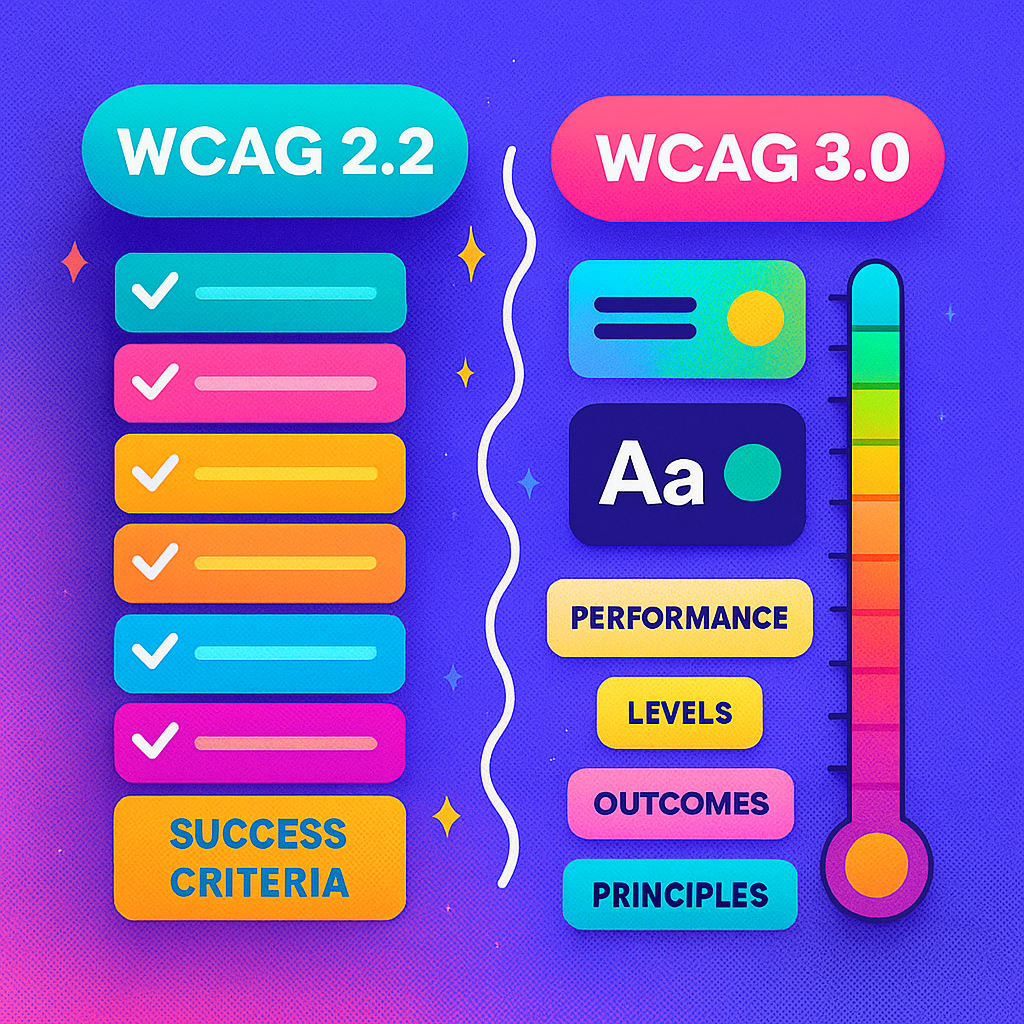Contextual Personas for Edge Devices
by Admin-checker
INDEX
Compare WCAG 3.0 draft and 2.2 accessibility guidelines. A simple, visual cheat sheet for designers who want to stay compliant and create inclusive UX.
Date Jul 23, 2025
INDEX

Accessibility standards are evolving. WCAG 2.2 introduced new success criteria, but WCAG 3.0 is shaping up to redefine how we evaluate accessibility altogether. The cheat-sheet delivers vital information to designers about the fundamental differences between WCAG 2.2 and WCAG 3.0 along with the required design workflow adjustments for 2025 compliance.
WCAG 2.2 builds upon the accessibility standards of 2.1 by introducing new requirements for mobile accessibility and cognitive clarity standards.
The following new features stand out:
These are all Level A or AA—meaning they are critical for compliance.
WCAG 3.0 exists as a draft document which introduces a scoring system that evaluates outcomes instead of traditional pass/fail assessments.
It focuses on:
| Category | WCAG 2.2 | WCAG 3.0 Draft |
|---|---|---|
| Structure | Guidelines → Success Criteria | Guidelines → Outcomes + Scoring |
| Scoring | Pass/Fail | 0–4 scale (bronze/silver/gold levels) |
| Targeted Tech | Mostly HTML/Web | Web + Mobile + AR/VR + PDF |
| Designer Impact | Component compliance | Holistic experience evaluation |
Tip: WCAG 3.0 is not backward-compatible, so you’ll need to update processes—not just checklists.

Even if it’s still a draft, you can align your workflow now by:
This mindset shift will make future compliance smoother—and better for real users.
WCAG 2.2 provides us with more specific guidelines to achieve better accessibility. WCAG 3.0 focuses on achieving results instead of following rules. Designers who want to stay ahead of the curve should create clear designs that produce high impact while considering all users. Accessibility has evolved from being a simple checkbox into the essential building block for creating outstanding user experiences.
Teams use Zapier in boardrooms, spare rooms, and rooms where AI has ROI.